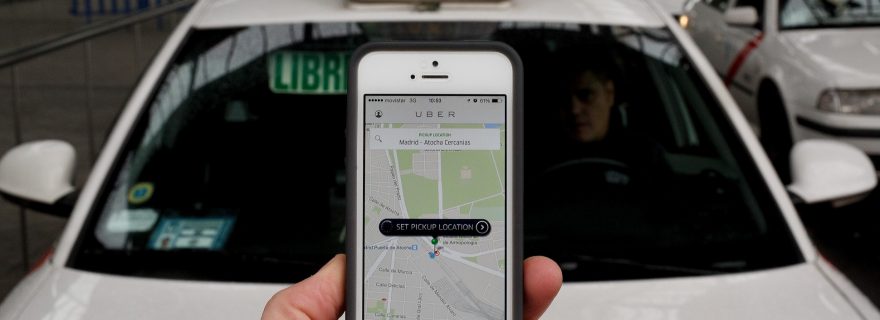Decentralized Traffic Control: Can citizens be trusted to define automotive security?
Since the inception of the automobile, centralized authority governing road side security was largely kept out of the hands of citizens. However, with new smart-phone applications and social media, users are re-innovating their roles in motorway safety.
Uber Technologies Inc. has been hailed as one of the most controversial taxi- service companies in the world, having amassed a net worth at nearly $51 billion according to the Wall Street Journal and the Huffington Post. However unlike other mainstream taxi services, Uber doesn’t rely on cars to make it’s wealth, but connected users.
Uber, like a few other smartphone applications, is a system that has innovated one of the first peer-to-peer (P2P) search engines with enterprise content delivery. Uber connects automotive goers to would-be-passengers, effectively creating an alternative market in the taxi industry that has already gained notoriety among unionized taxi services in many cities around the world. The Uber phenomenon gives rise to many concerns from established organizations citing safety standards for passengers and drivers alike. But looking beyond the ripples left in it's footstep, Uber represents a larger change in the way citizens create new and informed automotive measures, taking away from long established centralized practices to ensure a responsible automotive environment. Valued for it's cost effective and personalized interactive features, Uber continues to grow not only as an app, but a world-wide phenomenon. It has given taxi companies a run for their money, pushing a number of cities in the US, Europe, Australia, Japan, and India to outlaw Uber and the social market it creates.
Another rising star, Waze, was recently bought by Google Inc. Similarly, Waze is a GPS-based geographical application for smartphones that it is community-driven. It allows the gathering of complementary map data and traffic information from its users that is freely available to drivers. It provides real-time traffic updates up to and including accident reports, police-checkpoints and speed traps, and traffic jams with alternate route locators.
However like Uber, Waze has already stirred controversy among metropolitan police from around the world as well automotive markets. Some road-safety advocates have voiced concern over the prospect of more drivers using Waze, which they say has the potential to distract them with a flurry of icons and notifications and put them at greater risk of an accident. In March 2014, a successful attempt was made by students from Technion-Israel Institute of Technology to fake a traffic jam.
In December 2014, Los Angeles Police Department Chief Charlie Beck complained to Google Inc. about the police locator feature on the Waze application, claiming it could be "misused by those with criminal intent to endanger police officers and the community". It was alleged that Ismaaiyl Brinsley, who shot and killed two New York Police Department officers that month in retaliation for the police killings of Eric Garner and Michael Brown. Brinsley had used the Waze app prior to the murders and had posted a screenshot from the app on his Instagram account hours before the shootings.
Smart and social technologies like Uber and Waze clearly are redefining the future of roadside assistance and safety, however it poses significant questions regarding responsible use. While knee jerk reactions from municipal authorities and market regulators is to ban the use of citizen informed devices, the high demand for socially driven decision support platforms is rising. This makes it likely that despite legal measures to curtail their use, users will continue to seek and create more social media innovations. But rather than outlawing these applications however, it may be far more practical and likely in the near future, to mainly limit certain features on future application designs to ensure that citizens have informed access to traffic convenience, but with respect to the safety of law enforcement and other sensitivities.


